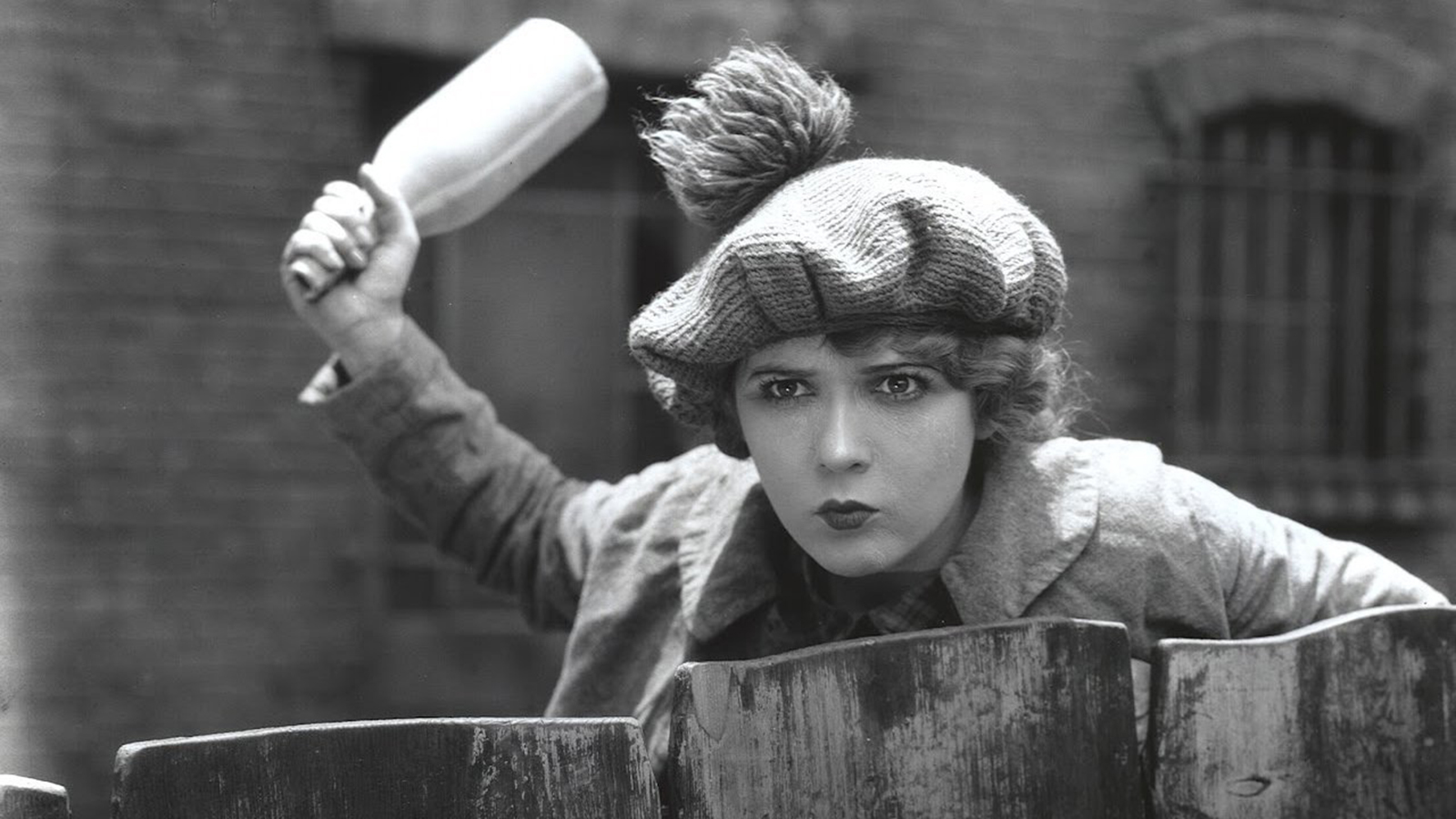Academy preservationists develop old film in new light

On Tuesday, a newly restored print of the 1925 silent comedy-drama “Little Annie Rooney” will be screened at the James Bridges Theater. A Q&A will follow with two of the film’s preservationists and Andy Gladbach, who composed a new original soundtrack. (United Artists)
By William Thorne
Oct. 28, 2015 11:54 p.m.
Feisty little urchin Annie Rooney has to fight on the grimy streets of 1920s New York to avenge her father’s murder in the movie “Little Annie Rooney.”
Ninety years after the release of the silent comedy-drama starring Mary Pickford, preservationists from the Academy of Motion Picture Arts and Sciences have teamed up with the Mary Pickford Foundation to develop a new, high-definition print of the movie, which will be screened at the James Bridges Theater on Tuesday.
The newly restored version of “Little Annie Rooney” is combined with a new original soundtrack. The screening will be followed by a Q&A with the film’s preservationists from the academy, Heather Linville and Mike Pogorzelski, and with the score’s composer, Andy Gladbach.
Preserving films from the early 20th century like “Little Annie Rooney” is a difficult process, Linville said. Most early films were shot on reels coated in nitrate, a highly flammable substance that also caused the films to quickly deteriorate over time. For that reason, old films have to be stored in cold, climate-controlled vaults to make sure they don’t catch fire and to increase their longevity, Linville said.
Linville estimates that up to 80 percent of all silent movies have been lost because of their flammability and the difficulty of preserving them.
When she received the print, Linville said her first step was to look for defects such as scratches or tears. However, she found it to be a good-condition nitrate print that was tinted.
Pogorzelski, director of the Academy Film Archive, explained that tinting is the process of immersing each strand of film into a bath filled with dye, so that the entire surface of the film is tinted in a single color. He said this effect is used to enhance the setting or emotion of a scene. For instance to set the mood of a nighttime exterior shot, the film could be tinted blue.
In addition to being tinted, Linville and Pogorzelski discovered that the “Little Annie Rooney” nitrate print had been made directly off the original camera negative. This meant that, unlike most nitrate prints that exist today, it hadn’t been reprinted repeatedly, which usually breaks down the quality of the film. Pogorzelski described the copy of “Little Annie Rooney” as one of the sharpest silent films he has ever seen.
“It’s a miracle that this print has survived from the silent film era because back then no one thought that there was any value in old movies,” Pogorzelski said. “(Filmmakers) thought the public just wanted to see whatever the latest production was, so rather than risk catching fire and taking out a neighborhood, they would deliberately destroy a film.”
Linville and Pogorzelski said that people’s view of old films has changed and now many others, like them, dedicate their careers to film restoration and preservation.
For Gladbach, an actor and film composer, the preservation project for “Little Annie Rooney” gave him an opportunity to add his own creativity to the movie.
The most important part of composing a film score is to reflect the movie’s tone and mood, Gladbach said. In “Little Annie Rooney,” Gladbach said the tone fluctuates from slapstick comedy to tragic family drama, meaning it was difficult to connect scenes together through the score.
Once he established the mood of the film, Gladbach said he went about trying to connect scenes together thematically using his score.
“I asked myself ‘What does it all mean in the context of some greater truth in this movie?’,” Gladbach said. “For ‘Little Annie Rooney,’ it’s both about a conflict in a community and people working together. It’s a conflict between cooperation and being alone and fighting only for yourself.”
Gladbach said from a composer’s perspective, the preservation of silent films is important because it allows more freedom than a film with dialogue would. For Linville and Pogorzelski, film preservation is about keeping the origins of the art form alive and learning from them.
“Movies are the closest thing we have to time travel, because unlike a photograph which captures a moment in time, films shows us how people move and how they interact with each other and the world they live in,” Pogorzelski said.

